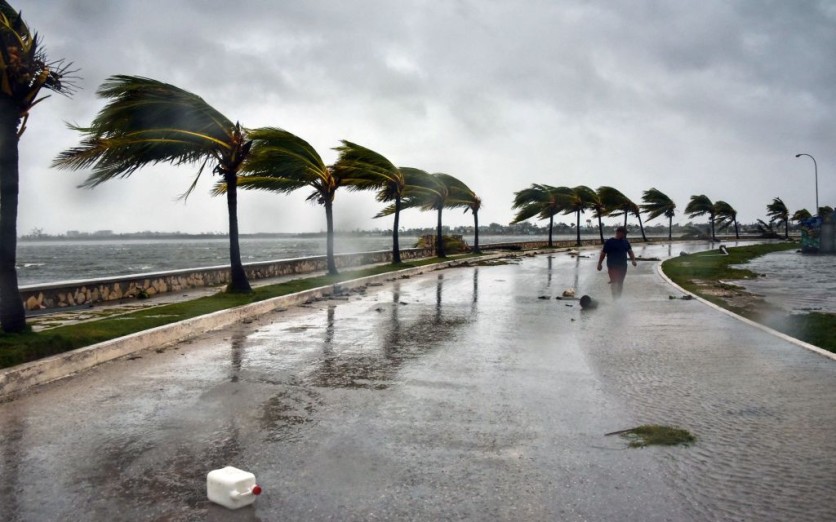Most coastal areas globally are projected to face "100-year flood" events annually until the end of the century, according to a new study. Accelerated glacier melting due to global warming is causing increased sea levels, leading to more frequent and severe coastal floods.

(Photo : ADALBERTO ROQUE/AFP via Getty Images)
TOPSHOT - A man walks against heavy winds after the passage of Hurricane Irma, at Caibarien, Villa Clara province, 330km east of Havana, on September 9, 2017.
Facing '100-Year Floods' Annually
The accelerated melting of glaciers due to global warming is causing a notable rise in sea levels, resulting in more frequent and severe coastal flooding incidents, primarily attributed to climate change.
Interesting Engineering reported that most coastal regions worldwide will experience "100-year floods" despite the scenario involving moderate carbon emissions.
According to Science Daily, a "100-year flood" is a flood event with a 1% chance of being equaled or exceeded in any given year and is based on historical data. The "100-year floods" can reportedly occur in the same area multiple years in a row or not at all within a century.
According to the study, what was once predicted using historical data is now deemed unreliable for forecasting future flood occurrences. The research reveals that these traditional methods are no longer sufficient for accurately predicting future flood probabilities.
Hamed Moftakhari, a civil engineer and professor at the University of Alabama who supervised the study, explained that what was once considered "100-year flood" events, expected to occur once every century on average, will become more common in a warmer climate.
Over time, these events will no longer conform to the traditional "100-year flood" definition, signifying a significant shift in flood patterns. This transformation arises from a complex interplay of elements driven by rising sea levels and evolving climate dynamics.
Projecting Future Extreme Sea Levels
In their empirical research, the scientists utilized dynamic approaches and discovered that extreme sea-level fluctuations won't follow a consistent pattern across numerous tide-gauge sites, Science Daily reported.
They scrutinized data from 300 tide gauges across the globe to delineate the global flooding landscape. Additionally, they employed two carbon emission scenarios outlined by the International Panel on Climate Change to project future extreme sea levels.
The study explores two distinct scenarios: one wherein carbon dioxide emissions steadily increase until the close of the century and the other wherein emissions peak by 2040 and decline due to climate mitigation efforts.
Considering both scenarios, the research findings indicate a higher frequency of 100-year flood events will be experienced in most coastal regions due to rising sea levels.
Research supported by NASA has revealed that approximately 50% of the glaciers in the Himalayas have undergone melting, primarily due to the Earth's temperature exceeding the 1.5 degrees Celsius threshold.
The study concentrated its investigations on the Imja-Lhotse Shar Glacier, situated in the vicinity of Mount Everest's base, during the period spanning from 2013 to 2017.
They utilized computer simulations and a global glacier model, with the exception of the Greenland and Antarctic ice sheets, to project that glaciers across the globe may experience a reduction in their mass of as much as 40 percent by the year 2100.


![Apple Watch Series 10 [GPS 42mm]](https://d.techtimes.com/en/full/453899/apple-watch-series-10-gps-42mm.jpg?w=184&h=103&f=9fb3c2ea2db928c663d1d2eadbcb3e52)


